-
Compteur de contenus
941 -
Inscription
-
Dernière visite
-
Jours gagnés
44
Messages posté(e)s par supaii
-
-
Nina :)
dans Acquisition
C est cool pour les windowsiens.
-
Le contraste est violent, mais que c est beau.
Il y a autan d étoile bleu que ça dans cette région (noob qu eje suis...)
-
Bienvenue sur le forum,
Et au plaisir de se rencontrer.
-
Ah je me demandais, comment fait on ? Car au taff postimage est bloqué...
-
C est beau ce que vous faites les gars, bravo.
-
-
Bonjour Michel,
Bienvenue sur le forum, la prochaine réunionest bien à ces dates ainsi qu'à Carrière-sous-Poissy.
On peut biensur s'y garer.
-
Belle prise, bon les coins... reste plus qu'à regler tout ça.
Je la trouve un peu trop rouge, tu as calibré tes couleurs?
-
j'utilise Kstar/Ekos sur un raspberry (monté sur le setup).
Les filtres sont parafocaux , ca manque de mise au point durant la nuit, il faut que je mette les options de mise au point (elles existent), focus toutes les X minutes ou foucus si HFR >X.
-
A mon tour sur IC1396,
Clairement pas la photographie de l’année, sous mes cieux mais cela me fait de l'entraînement.
De la prise de vue, pré-traitement et traitement, c'est un bon exercice.
Le but était de valider l'automatisme du setup (mode observatoire nomade.
 )
) Je lui est indiquer quelle cible je voulais a 21h:
- a 22h, fin du crépuscule, il décide de lancer la planification.
- il sort de sa position park
- fait un slew sur la cible
- astrométrie, puis recalage sur le centre de l objet (auto)
- mise au point
- guidage
- début des prises (je vais me coucher)
- stop, retournement au méridien
- astrométrie, puis recalage sur le centre de l objet (auto)
- reprise des poses
- fin des poses, prise des flats
- fin des flat , park, et warm ccd.
Quelques heures après je me lève, je retire la cle usb du scope, tout est dedans
![[renversant]](https://avex-asso.org/ips/applications/core/interface/js/spacer.png) .
.Image totalise 4 heures de pose (gain 11, offset 8 sur QHY183M)
50 images sur 60 de 180 secondes avec un filtre luminance
10 images de 180 secondes avec un filtre rouge
10 images de 180 secondes avec un filtre vert
10 images de 180 secondes avec un filtre bleu
-
Belle prise, ça me rappele (tout ce rouge) qu'il faut que je m achete un Halpha (en guise de filtre polution
 ).
). -
J'ai bien l'accompagnement du timelaspe en astro, c'est très bien fait. Cela met un peu de dynamique
![;]](https://avex-asso.org/ips/applications/core/interface/js/spacer.png) dans ce monde de photo.
dans ce monde de photo. -
Je trouve aussi que c'est bien bleu (c'est aussi moi, j 'ai pas d'écran calibrer, il faut que je me penche sur cette affaire d'ailleurs
 )
) -
Fredo, ça envoi du lourd. Je préfère quand même celle avec les étoiles.
J'ai l'impression de voir une double aigrette verticale sur celle sans etoiles, non?
Il faut que tu me montre ta neutralisation d'étoile (du moins le cheminement pour bien les atténuer, pas les supprimer, non
![[coupé en 2]](https://avex-asso.org/ips/applications/core/interface/js/spacer.png) ).
). -
C'est sympa comme champ.
J'ai l impression que tu as un flat inversé?
Je me demande assez souvent comment faire une extraction du fond de ciel avec autant de signal de nebuleuse?
-
Je pense que c'est le mieux, un PO pour les gouverner tous.
-
Bien joué Alex, vraiment.
-
Procédé n°1 : cocher dans EQMOD "Activer les limites", et autoriser le renversement automatique au méridien. Résultat : la monture m'a indiqué comme étant à la limite instantanément, alors qu'il restait 1 heure avant que l'objet passe le méridien. Elle n'a rien fait toute seule, elle s'est juste bloquée.
Arf, je ne peu t'aider, connais mal eqmod.
Procédé n°2 : Pointer successivement deux objets pour orienter le Goto de manière à lui faire faire un retournement au méridien tout seul. Résultat: Retournement au méridien effectué. MAIS, l'objet n'est plus là. Le goto fonctionne, le télescope pointe la bonne région du ciel (semble-t-il) sauf que la nébuleuse n'apparaît plus sur la photo. Je cherche autour je refais des photos, impossible de remettre le doigt dessus. La séance s'arrête donc à 00.10 car je n'arrive plus à retrouver l'objet. Je viens de voir qu'effectivement, je n'étais pas du tout au bon endroit, et ça malgré la resynchronisation de Cartes du ciel. Je suis à proximité de NGC7067 après retournement et alignement, en ayant pointé NGC7000.
Ça ressemble à une mise en station hasardeuse?! tu la fait avec eqmod ou avec le viseur polaire? était tu de niveau?
Enfin, mes bords de champs sont tout étirés, mais j'ai mesuré, je suis bien à 63mm après le correcteur de champs. Si j'ai cet étirement, ça doit être dû à un mauvais Backfocus non ? je dois pas mesurer au bon endroit ?
63mm , cette longueur est avec le filetage de fixation ou pas (tu as vite fait de rajouter ou d'enlever la distante)?
De mémoire,
- étoiles étirées du centre vers les bords => augmente la distance (>63mm)
- étoiles étirées perpendiculaire au centre => diminue la distance (<63mm)
-
le moteur en 12V (driver), et l'arduino aussi (via un regulateur de tension), l'usb est juste la pour les commandes
-
Quelques info de plus.
https://www.
 -asso.org/forum/viewtopic.php?t=3919
-asso.org/forum/viewtopic.php?t=3919http://www.astrosurf.com/luxorion/pollution-lumineuse2.htm
et aussi sur le nuage
 dans /echange.
dans /echange. -
Virement fait ce jour.
A vendredi...
-
Merci pour ton retour, à vroi dire je n attendais rien de cette session. Qui plus est dans ce lieu sans filtre ha en ma possession.
Soirée test, en attendant les sorties d
 .
. -
Bienvenue voisin

-

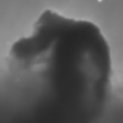
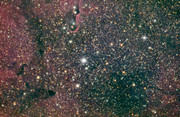
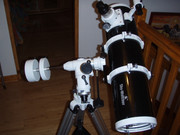

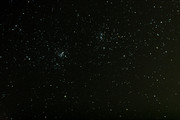
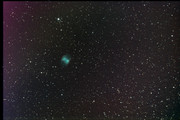

Celestron RASA 8" Review
dans Discussions générales
Posté(e)
Comme discuté sur Whatapps, je le sens mal (bon je suis débutant aussi).
Si tu opte pour un machin à F/2, oui c'est cool ça réduit le temps d’acquisition, mais si il faut 80% de la nuit pour régler le bordel, je ne vois pas l 'intéret (en nomade bien sur).